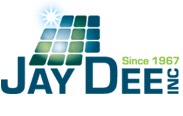A good maintenance program is seldom a one-size-fits-all solution. Various areas of a building or facility often have different building materials present, which may require special cleaning chemicals or equipment.
The rates of abuse might also vary, with one area needing more frequent cleaning than another. That’s why a quality maintenance program must be tailored to a specific area and its needs, especially when health and sanitation are major concerns.
Keeping Staff Safe
Commercial kitchens can be notoriously busy places, especially in the cooking, dishwashing, and prep areas where spills are frequent and often messy. This does not diminish the need for staff to move quickly, but safely, especially in the presence of hot surfaces and wet floors.
Because of this, commercial kitchens often use unsealed tile, such as quarry tile, and depend on an impregnating sealer to protect the grout lines. This allows the floor to retain some grip for safety, while still sealing grout lines against moisture – an essential part of maintaining any sanitary space.
Unsealed grout lines are an invitation to odor, staining, and bacterial buildup. Grout is naturally porous. Without an impregnating sealer, the tiny holes present in grout allow contaminants and foul liquids to soak into grout lines, resulting in deep soiling and foul odors. If cementitious grout is present, it’s best to avoid harsh industrial chemicals, pressure washing, and no-rinse cleaners. They can all cause grout to deteriorate and break down with repeated use.
When it comes to keeping commercial kitchen flooring safe, there are some basic steps that are essential for daily kitchen maintenance.
1. Removal of surface debris.
2. Application of the appropriate cleaner and any necessary chemical dwell times.
3. Agitation of the surface with the appropriate tool.
4. Disposal of the soiled liquids, preferably with a vet vac.
5. Rinsing the surface with clean water and remove the dirty water with a wet vac.
6. Allowing the surface to dry.
Because fats and oils are common contaminants in kitchen areas, maintaining kitchen surfaces should include degreasing. There are a lot of “no rinse” cleaning products designed to streamline the cleaning process but be cautious.
According to TILE Magazine, “These no-rinse cleaners create a film on the tile and grout that breaks down fat and proteins into fatty acid. This acid is known to cause damage to some tile and the grout.” Be sure to wash away any fatty acids after the appropriate dwell time if “no rinse” products are used.
The same advice should be followed when using neutral cleaners, though many will claim rinsing is unnecessary. Many standard cleaning agents will be too acidic for the unsealed tile often found in kitchens, so it’s important to choose a neutral pH cleaner.

Cross-contamination and Intensive Cleaning
Having a solid cleaning routine is just one part of a sustainable maintenance program; avoiding cross-contamination is another.
Equipment used to clean restrooms should never be used to clean food prep areas, nor should they be stored in the same space. This is essential for preventing foodborne illnesses and maintaining proper sanitation.
In addition, a solid maintenance plan will also include occasional intensive cleaning. It’s wise to hire tile and grout restoration professionals for this as they can also perform any necessary repairs to damaged surfaces as needed. Coatings and sealants don’t last forever and maintaining a barrier against moisture and contaminants is the foundation of a quality maintenance program.
Looking for a hassle-free way to maintain the tile and grout in your commercial kitchen? Contact Jay Dee Inc. at 303-233-3311 and let our team of experts simplify your maintenance program. With our top-quality services, you can ensure your commercial kitchen stays clean and hygienic, without the stress of DIY cleaning. Get in touch today to learn more!

